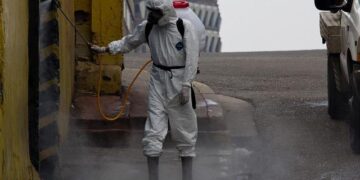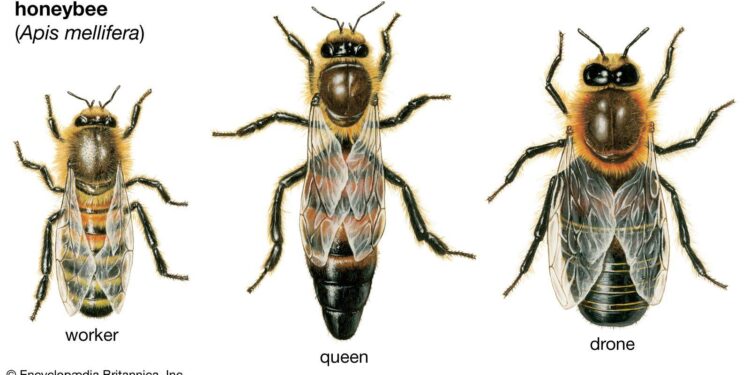California’s honey bee populations are facing alarming declines, putting the state’s vital agricultural economy at risk. As the backbone of pollination for crops that generate billions in revenue annually, the dwindling numbers of these essential pollinators have raised urgent concerns among farmers, scientists, and policymakers alike. Now, Central Valley lawmakers are stepping into the spotlight, grappling with how to protect honey bees and safeguard California’s agricultural future. This article explores the causes behind the bee crisis and examines whether legislative efforts in the Central Valley can stem the losses before it’s too late.
The Economic Impact of Honey Bee Decline on California Agriculture
California’s agricultural industry relies heavily on honey bees for pollination, especially in the Central Valley, which produces more than 400 different crops. With the alarming decline in honey bee populations, many farmers face reduced crop yields and increased costs to rent commercial hives. Almonds, cherries, and citrus fruits are particularly vulnerable, as these crops depend almost entirely on bee pollination. The economic ripple effect extends beyond farms, impacting food prices, labor demand, and even export revenues statewide.
According to recent estimates, the annual economic value of honey bee pollination in California exceeds $3 billion. Without immediate intervention, the state risks losing not only its crop diversity but also jobs tied to the agriculture sector. Key challenges include pesticide exposure, habitat loss, and disease, all intensifying the crisis. Below is a snapshot of major crops affected and their approximate pollination costs as of 2023:
| Crop | Annual Production Value | Pollination Cost (Millions) |
|---|---|---|
| Almonds | $6.5B | $200M |
| Cherries | $400M | $15M |
| Citrus | $1.2B | $50M |
| Blueberries | $120M | $5M |
Stakeholders are urging Central Valley lawmakers to fund research, establish bee-friendly habitats, and regulate harmful pesticides. Proposed initiatives also emphasize supporting local beekeepers, whose role is critical in sustaining pollination services. The state’s agricultural resilience depends on a coordinated response to halt and reverse the downward trend in bee populations.
- Rising production costs due to hive rental increases
- Reduced crop yields threatening food supply
- Job losses in farming and related sectors
- Rising production costs due to hive rental increases Legislative Efforts to Protect Pollinators in the Central Valley
- SB 45: Expands pesticide reporting requirements and enforces seasonal application restrictions near apiaries.
- AB 1003: Allocates state grants for pollinator habitat restoration on private and public lands.
- Pollinator-Friendly Certification Program: Encourages sustainable farming practices through voluntary incentives and educational outreach.
It looks like the last list item might be incomplete in your HTML snippet. Here’s a completed version of that list along with the rest of the snippet properly closed, ensuring valid HTML:
“`html
California’s agricultural industry relies heavily on honey bees for pollination, especially in the Central Valley, which produces more than 400 different crops. With the alarming decline in honey bee populations, many farmers face reduced crop yields and increased costs to rent commercial hives. Almonds, cherries, and citrus fruits are particularly vulnerable, as these crops depend almost entirely on bee pollination. The economic ripple effect extends beyond farms, impacting food prices, labor demand, and even export revenues statewide.
According to recent estimates, the annual economic value of honey bee pollination in California exceeds $3 billion. Without immediate intervention, the state risks losing not only its crop diversity but also jobs tied to the agriculture sector. Key challenges include pesticide exposure, habitat loss, and disease, all intensifying the crisis. Below is a snapshot of major crops affected and their approximate pollination costs as of 2023:
| Crop | Annual Production Value | Pollination Cost (Millions) |
|---|---|---|
| Almonds | $6.5B | $200M |
| Cherries | $400M | $15M |
| Citrus | $1.2B | $50M |
| Blueberries | $120M | $5M |
Stakeholders are urging Central Valley lawmakers to fund research, establish bee-friendly habitats, and regulate harmful pesticides. Proposed initiatives also emphasize supporting local beekeepers, whose role is critical in sustaining pollination services. The state’s agricultural resilience depends on a coordinated response to halt and reverse the downward trend in bee populations.
Central Valley legislators have recently intensified their push for stronger pollinator protections amid alarming declines in honey bee populations. Key bills aim to restrict the use of harmful pesticides like neonicotinoids, which have been scientifically linked to bee mortality. Lawmakers are also advocating for increased funding to support habitat restoration projects, prioritizing native plant growth corridors that offer vital forage and nesting spaces for pollinators. These efforts are designed to bolster both commercial and wild bee populations, crucial not only for biodiversity but also for the economic vitality of California’s multi-billion-dollar agriculture sector.
Some notable legislative initiatives include:
| Bill | Main Focus | Status |
|---|---|---|
| SB 45 | Pesticide Regulation | Passed Assembly |
| AB 1003 | Habitat Funding | In Senate Committee |
| Pollinator Certification | Farm Incentives | Under Review |
Strategies for Sustainable Beekeeping and Crop Pollination Support
Central Valley lawmakers and agricultural stakeholders are increasingly advocating for integrated approaches to protect honey bee populations vital for crop pollination. Key methods include the promotion of habitat restoration efforts that introduce wildflower buffers and native plant corridors, helping to replenish natural foraging grounds. Furthermore, greater regulation and reduction of harmful pesticides-especially neonicotinoids-play a crucial role in minimizing bee exposure to toxins. Beekeepers are also encouraged to adopt sustainable hive management practices, such as rotational grazing of hives to prevent the spread of diseases and reduce environmental stressors.
Collaboration between farmers and beekeepers is strengthening through shared education programs and resource exchanges, fostering a community-based support system. Additionally, investments in research for breeding disease-resistant bee strains and diversified pollinator species promote resilience against colony losses. The following table illustrates a breakdown of targeted strategies alongside their expected impacts on both bee health and crop yields:
| Strategy | Impact on Bees | Effect on Crop Pollination | ||||||||||
|---|---|---|---|---|---|---|---|---|---|---|---|---|
| Wildflower Habitat Restoration | Increases food sources, promotes nutrition | Enhances pollination efficiency, fruit set | ||||||||||
| Pesticide Regulation | Reduces toxic exposure, improves survival rates | Maintains steady pollinator populations | ||||||||||
| Sustainable Hive Management | Limits disease spread, strengthens colonies |
Central Valley lawmakers and agricultural stakeholders are increasingly advocating for integrated approaches to protect honey bee populations vital for crop pollination. Key methods include the promotion of habitat restoration efforts that introduce wildflower buffers and native plant corridors, helping to replenish natural foraging grounds. Furthermore, greater regulation and reduction of harmful pesticides-especially neonicotinoids-play a crucial role in minimizing bee exposure to toxins. Beekeepers are also encouraged to adopt sustainable hive management practices, such as rotational grazing of hives to prevent the spread of diseases and reduce environmental stressors. Collaboration between farmers and beekeepers is strengthening through shared education programs and resource exchanges, fostering a community-based support system. Additionally, investments in research for breeding disease-resistant bee strains and diversified pollinator species promote resilience against colony losses. The following table illustrates a breakdown of targeted strategies alongside their expected impacts on both bee health and crop yields:
|































